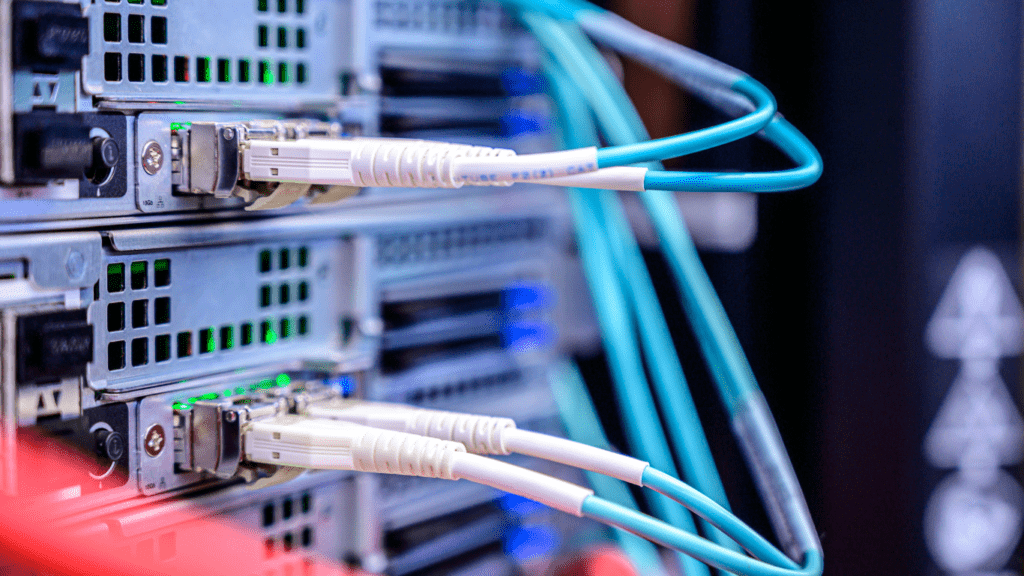Ethernet, the backbone of modern networking, has undergone a remarkable evolution over the years, propelling data transfer speeds from the early days of 10G to the awe-inspiring realm of Terabit speeds. As a tech enthusiast, I’ve witnessed firsthand the groundbreaking advancements that have shaped the way we connect and communicate in the digital age. From the humble beginnings of Ethernet to the lightning-fast speeds achievable today, the journey of this technology is nothing short of extraordinary.
In this article, I delve into the fascinating journey of Ethernet, exploring how it has transformed to meet the ever-increasing demands of our interconnected world. Join me as we unravel the milestones, innovations, and future prospects of Ethernet, from its modest beginnings to the era of Terabit speeds. Get ready to embark on a thrilling ride through the evolution of Ethernet, where each advancement paves the way for a faster, more connected future.
History of Ethernet
Exploring the history of Ethernet reveals a fascinating journey of technological advancements that have shaped our modern connectivity. Starting with humble beginnings, Ethernet was initially developed in the 1970s by Xerox Corporation to connect their research labs. Over the years, Ethernet evolved rapidly, with numerous iterations and improvements, leading to the establishment of IEEE 802.3 standards for Ethernet in the early 1980s.
During the 1990s, the introduction of Fast Ethernet brought speeds of up to 100 Mbps, revolutionizing data transmission capabilities. This was followed by the inception of Gigabit Ethernet in the early 2000s, offering speeds of up to 1 Gbps, further enhancing network performance.
As demand for faster and more reliable networks continued to grow, 10 Gigabit Ethernet emerged in the mid-2000s, providing speeds ten times faster than Gigabit Ethernet. Subsequently, advancements in technology led to the development of 40 Gigabit Ethernet and 100 Gigabit Ethernet standards to meet the escalating requirements of data-intensive applications and services.
Looking ahead, the industry is now gearing up for Terabit Ethernet, with research and development underway to achieve speeds of 1 Terabit per second and beyond. This continued evolution of Ethernet showcases the relentless pursuit of innovation in the realm of networking technologies, setting the stage for a future characterized by unprecedented speed and connectivity.
Speed Advancements in Ethernet

Ethernet has seen remarkable speed advancements over the years, with each iteration pushing the boundaries of data transmission capabilities. From the initial 10 Gigabit Ethernet (10G) to the upcoming Terabit Ethernet, the evolution of Ethernet has been a journey of relentless innovation.
- Transition from 10G to Beyond
Moving beyond the 10 Gigabit speed threshold, Ethernet technology is venturing into uncharted territories with the development of speeds beyond a Terabit per second. The transition from 10G to Terabit Ethernet represents a significant leap in networking capabilities, catering to the escalating demands of modern data centers and networks. - Impact of Terabit Speeds
Diving into the realm of Terabit Ethernet signifies a groundbreaking shift in networking velocity. This monumental leap propels data transmission capacities to unprecedented levels, aligning with the surging requirements of contemporary network infrastructures. The migration towards Terabit Ethernet illuminates a path paved with cutting-edge technological advancements, heralding a future brimming with unparalleled rapidity and interconnectivity.
Future Prospects of Ethernet
Exploring the future prospects of Ethernet, we anticipate a revolutionary era marked by the advent of Terabit Ethernet. This breakthrough advancement is poised to redefine the networking landscape, offering unparalleled speeds and capabilities that surpass current standards by several orders of magnitude.
In the realm of networking technology, the transition to Terabit Ethernet holds immense promise for accommodating the escalating demands of modern network infrastructures. With data transmission capacities reaching unprecedented levels, organizations will experience a significant boost in their ability to handle vast amounts of information swiftly and efficiently.
Moreover, the evolution towards Terabit Ethernet signifies a monumental leap in interconnectivity, laying the foundation for a future where seamless communication and rapid data exchanges are the norm. This shift not only enhances the speed and efficiency of network operations but also opens doors to innovative applications and services that can leverage the vast bandwidth of Terabit Ethernet.
The prospects for Terabit Ethernet extend beyond mere speed enhancements, encompassing a transformative impact on diverse sectors ranging from cloud computing and data centers to telecommunications and beyond. As we embrace this new era of networking, the possibilities for technological advancement and digital transformation are boundless, heralding a future characterized by unparalleled rapidity and connectivity in the digital age.



